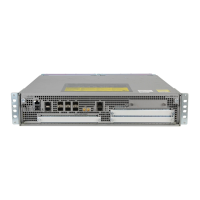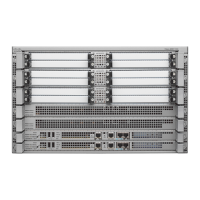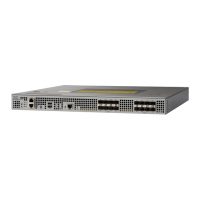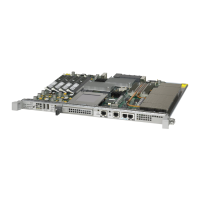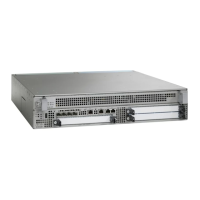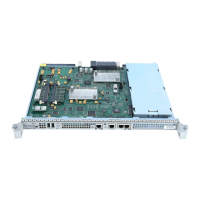10-2
Cisco ASR 1000 Series Aggregation Services Routers SIP and SPA Software Configuration Guide
OL-14127-08
Chapter 10 Configuring the Ethernet SPAs
Configuration Tasks
• Configuring a Subinterface on a VLAN, page 10-12
• VLAN Classification, page 10-13
• Saving the Configuration, page 10-15
• Shutting Down and Restarting an Interface on a SPA, page 10-15
Required Configuration Tasks
This section lists the required configuration steps to configure the Gigabit Ethernet SPAs. Some of the
required configuration commands implement default values that might be appropriate for your network.
If the default value is correct for your network, then you do not need to configure the command. These
commands are indicated by “(As Required)” in the Purpose column.
To configure the Fast Ethernet or Gigabit Ethernet SPAs, complete the following steps:
Command Purpose
Step 1
Router# configure terminal Enters global configuration mode.
Step 2
Router(config)# interface gigabitethernet
slot/subslot/port[.subinterface-number]
or
Router(config)# interface tengigabitethernet
slot/subslot/port[.subinterface-number]
or
Router(config)# interface fastethernet
slot/subslot/port[.subinterface-number]
Specifies the Gigabit Ethernet, Ten Gigabit
Ethernet, or Fast Ethernet interface to configure,
where:
• slot/subslot/port—Specifies the location of
the interface. See the
“Specifying the Interface
Address on a SPA” section on page 10-4.
• .subinterface-number—(Optional) Specifies a
secondary interface (subinterface) number.
Step 3
Router(config-if)# ip address [ip-address mask
{secondary} | dhcp {client-id
interface-name}{hostname host-name}]
Sets a primary or secondary IP address for an
interface that is using IPv4, where:
• ip-address—Specifies the IP address for the
interface.
• mask—Specifies the mask for the associated
IP subnet.
• secondary—(Optional) Specifies that the
configured address is a secondary IP address.
If this keyword is omitted, the configured
address is the primary IP address.
• dhcp—Specifies that IP addresses will be
assigned dynamically using DHCP.
• client-id interface-name—Specifies the client
identifier. The interface-name sets the client
identifier to the hexadecimal MAC address of
the named interface.
• hostname host-name—Specifies the
hostname for the DHCP purposes. The
host-name is the name of the host to be placed
in the DHCP option 12 field.
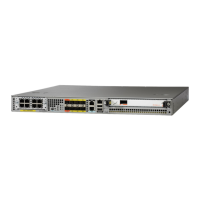
